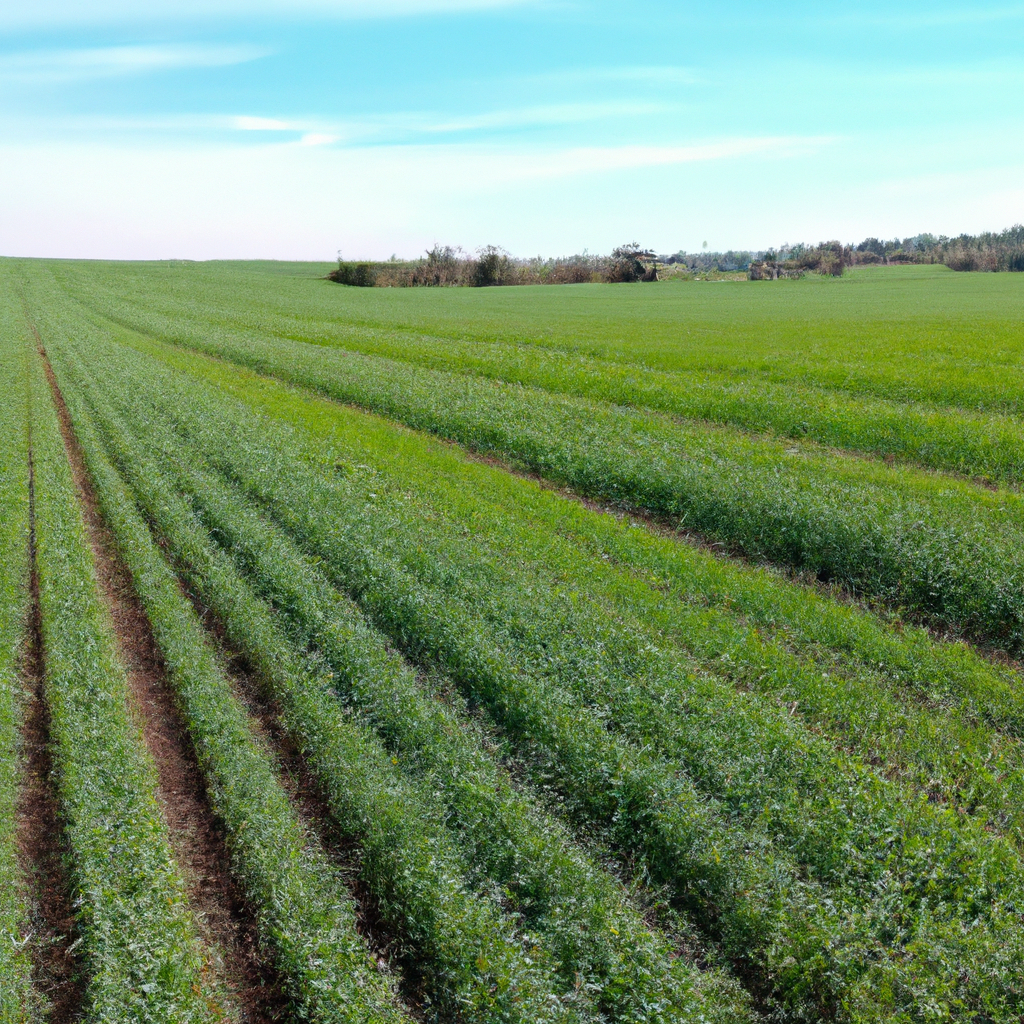Sustainable agriculture refers to a method of farming that focuses on the long-term health of the environment, economy, and society. This technique aims to meet the needs of the present without compromising the ability of future generations to meet their own needs. The goal of sustainable agriculture is to reduce the ecological impact of farming while increasing food production. One way to achieve this is through innovative techniques that promote organic farming, regenerative agriculture, eco-friendly farming, green farming, sustainable farming practices, climate-smart agriculture, agroforestry, and conservation agriculture. In this article, we will explore some of these innovative techniques in sustainable agriculture.
Organic Farming
Organic farming is a farming technique that avoids the use of synthetic fertilizers and pesticides. Instead, it focuses on natural methods of pest and weed control, such as crop rotation, intercropping, and the use of natural predators. Organic farming also prioritizes soil health by using compost, cover crops, and other organic matter to improve soil fertility and reduce erosion. Organic farming promotes biodiversity and reduces the use of non-renewable resources, making it an innovative technique in sustainable agriculture.
Regenerative Agriculture
Regenerative agriculture is a farming technique that aims to restore the health of the soil by increasing the amount of organic matter in the soil. This technique focuses on building healthy soil microbiology, which helps plants absorb nutrients from the soil. Regenerative agriculture also prioritizes biodiversity by promoting the use of cover crops, crop rotations, and intercropping. This technique helps to sequester carbon in the soil, which reduces greenhouse gas emissions and mitigates the effects of climate change.
Eco-Friendly Farming
Eco-friendly farming is a farming technique that aims to reduce the environmental impact of farming. This technique focuses on reducing greenhouse gas emissions, conserving water, and reducing the use of non-renewable resources. Eco-friendly farming promotes the use of renewable energy sources, such as solar and wind power, to power farms. This technique also promotes the use of precision agriculture, which uses technology to optimize crop yields while minimizing the use of resources.
Green Farming
Green farming is a farming technique that focuses on reducing the ecological footprint of farming. This technique promotes the use of sustainable farming practices, such as crop rotation, intercropping, and the use of natural predators. Green farming also prioritizes soil health by promoting the use of compost, cover crops, and other organic matter to improve soil fertility and reduce erosion. This technique promotes biodiversity and reduces the use of non-renewable resources, making it an innovative technique in sustainable agriculture.
Sustainable Farming Practices
Sustainable farming practices refer to farming techniques that prioritize the long-term health of the environment, economy, and society. These practices focus on reducing the use of non-renewable resources, such as fossil fuels, and promoting the use of renewable resources, such as solar and wind power. Sustainable farming practices also prioritize soil health by promoting the use of organic matter to improve soil fertility and reduce erosion. These practices promote biodiversity and reduce the ecological impact of farming.
Climate-Smart Agriculture
Climate-smart agriculture is a farming technique that aims to reduce greenhouse gas emissions and mitigate the effects of climate change. This technique focuses on reducing the use of non-renewable resources, such as fossil fuels, and promoting the use of renewable resources, such as solar and wind power. Climate-smart agriculture also promotes the use of precision agriculture, which uses technology to optimize crop yields while minimizing the use of resources. This technique helps to sequester carbon in the soil, which reduces greenhouse gas emissions and mitigates the effects of climate change.
Agroforestry
Agroforestry is a farming technique that combines agriculture with forestry. This technique involves planting trees and shrubs in and around farm fields to improve soil fertility, reduce erosion, and promote biodiversity. Agroforestry also provides additional income streams for farmers, such as the sale of timber, fruits, and nuts. This technique helps to sequester carbon in the soil and reduces the ecological impact of farming.
Conservation Agriculture
Conservation agriculture is a farming technique that aims to reduce soil erosion and improve soil health. This technique focuses on reducing tillage, promoting the use of cover crops, and minimizing the use of synthetic fertilizers and pesticides. Conservation agriculture also promotes the use of natural predators to control pests and weeds. This technique helps to improve soil fertility, reduce erosion, and promote biodiversity.
In conclusion, sustainable agriculture is an innovative technique that aims to reduce the ecological impact of farming while increasing food production. Organic farming, regenerative agriculture, eco-friendly farming, green farming, sustainable farming practices, climate-smart agriculture, agroforestry, and conservation agriculture are some of the innovative techniques that promote sustainable agriculture. These techniques prioritize soil health, reduce the use of non-renewable resources, promote biodiversity, and reduce greenhouse gas emissions. By adopting these innovative techniques, farmers can promote sustainable agriculture and help to mitigate the effects of climate change.







